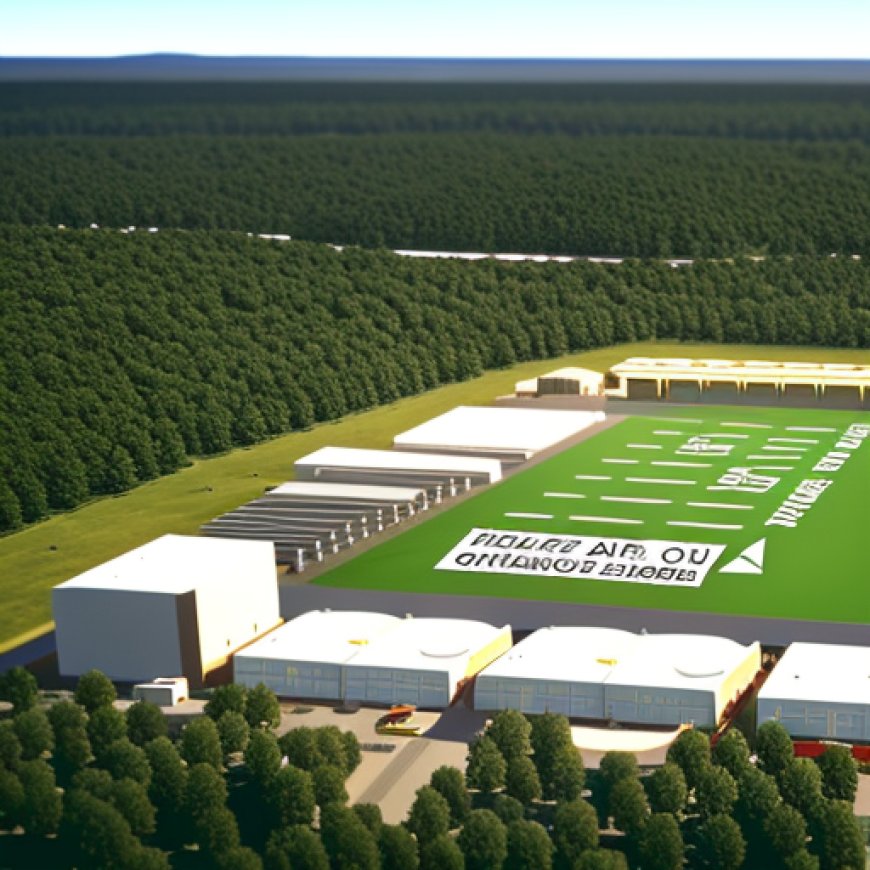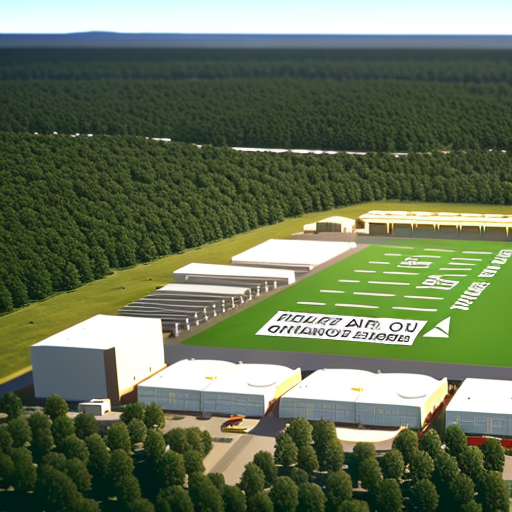Synthica Energy Receives Air Quality Permit for Anaerobic Digestion Facility in Rome, Ga.
Synthica Energy Receives Air Quality Permit for Anaerobic Digestion Facility in Rome, Ga. - Synthica Energy Receives ... waste360


Synthica Energy Receives Air Quality Permit for Anaerobic Digestion Facility in Rome, Georgia

Introduction
Synthica Energy, a leading developer of anaerobic digestion facilities that convert organic waste into renewable natural gas (RNG), has received an Air Quality Permit from the Georgia Department of Natural Resources for its new facility in Rome, Georgia. The facility, located at W. Hermitage Rd NE & Old Shannon Rd. in Floyd County, aims to divert up to 300,000 tons of industrial organic waste each year. This article discusses the significance of this permit and its alignment with the Sustainable Development Goals (SDGs).
Air Quality Permit and Facility Details
The Air Quality Permit issued by the Georgia Department of Natural Resources establishes enforceable emission limitations for Synthica Energy’s anaerobic digestion facility. The facility consists of two digesters, two tanks, and a boiler. The permit allows Synthica to break ground at the site in Q2 2024, with operations expected to begin in late 2025.
Partnership for Sustainable Development
Missy Kendrick, President & CEO of the Rome Floyd County Development Authority, highlights the significance of the air permit for Synthica Energy’s facility in Rome. She states, “The approval of the air permit for Synthica Energy’s anaerobic digestion facility in Rome, Georgia, marks a significant milestone in our commitment to sustainable development.” Kendrick emphasizes that the partnership with Synthica aligns with their mission to foster innovation and environmental responsibility. The facility provides a resource to support environmentally friendly corporate policies and contributes to shaping a cleaner and more resilient future for Rome and Floyd County. This project exemplifies their dedication to progressive industry practices that benefit both the community and the planet.
Anaerobic Digestion and Expansion Plans
The anaerobic digester being built in Rome utilizes time-tested technology to transform waste into renewable energy. Synthica Energy has already broken ground on its flagship location in Cincinnati, Ohio, and is developing similar facilities in a dozen other markets, including San Antonio, Houston, New Orleans, and Louisville. The demand for such facilities is significant across the Atlanta region. Currently, there are no anaerobic digestion plants within 50 miles of downtown Atlanta, making it more expensive for food and beverage manufacturing plants in the region to operate due to increased costs of waste disposal. The implementation of anaerobic digestion not only provides cost savings but also has a positive environmental impact through the production of RNG.
About Synthica Energy
Synthica Energy is a renewable natural gas (RNG) development company focused on creating anaerobic digestion facilities across the United States. Founded in 2017, Synthica is developing facilities in Cincinnati, Atlanta, San Antonio, New Orleans, Louisville, and other urban markets. The company has long-term agreements in place to manage waste from leading manufacturers in those regions. For more information, visit www.synthica.com.
SDGs, Targets, and Indicators
1. Which SDGs are addressed or connected to the issues highlighted in the article?
- SDG 7: Affordable and Clean Energy
- SDG 9: Industry, Innovation, and Infrastructure
- SDG 12: Responsible Consumption and Production
- SDG 13: Climate Action
2. What specific targets under those SDGs can be identified based on the article’s content?
- SDG 7.2: Increase substantially the share of renewable energy in the global energy mix.
- SDG 9.4: Upgrade infrastructure and retrofit industries to make them sustainable.
- SDG 12.4: By 2020, achieve the environmentally sound management of chemicals and all wastes throughout their life cycle, in accordance with agreed international frameworks, and significantly reduce their release to air, water, and soil to minimize their adverse impacts on human health and the environment.
- SDG 13.2: Integrate climate change measures into national policies, strategies, and planning.
3. Are there any indicators mentioned or implied in the article that can be used to measure progress towards the identified targets?
- Indicator for SDG 7.2: Proportion of total final energy consumption from renewable sources.
- Indicator for SDG 9.4: CO2 emissions per unit of value added.
- Indicator for SDG 12.4: National recycling rate, tons of waste diverted from landfills.
- Indicator for SDG 13.2: Number of countries that have communicated the establishment or operationalization of an integrated policy/strategy/plan which increases their ability to adapt to the adverse impacts of climate change, and foster climate resilience and low greenhouse gas emissions development in a manner that does not threaten food production.
SDGs, Targets, and Indicators
| SDGs | Targets | Indicators |
|---|---|---|
| SDG 7: Affordable and Clean Energy | Increase substantially the share of renewable energy in the global energy mix. | Proportion of total final energy consumption from renewable sources. |
| SDG 9: Industry, Innovation, and Infrastructure | Upgrade infrastructure and retrofit industries to make them sustainable. | CO2 emissions per unit of value added. |
| SDG 12: Responsible Consumption and Production | By 2020, achieve the environmentally sound management of chemicals and all wastes throughout their life cycle, in accordance with agreed international frameworks, and significantly reduce their release to air, water, and soil to minimize their adverse impacts on human health and the environment. | National recycling rate, tons of waste diverted from landfills. |
| SDG 13: Climate Action | Integrate climate change measures into national policies, strategies, and planning. | Number of countries that have communicated the establishment or operationalization of an integrated policy/strategy/plan which increases their ability to adapt to the adverse impacts of climate change, and foster climate resilience and low greenhouse gas emissions development in a manner that does not threaten food production. |
Behold! This splendid article springs forth from the wellspring of knowledge, shaped by a wondrous proprietary AI technology that delved into a vast ocean of data, illuminating the path towards the Sustainable Development Goals. Remember that all rights are reserved by SDG Investors LLC, empowering us to champion progress together.
Source: waste360.com

Join us, as fellow seekers of change, on a transformative journey at https://sdgtalks.ai/welcome, where you can become a member and actively contribute to shaping a brighter future.







